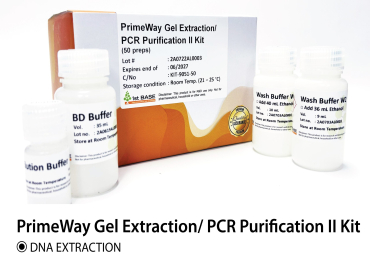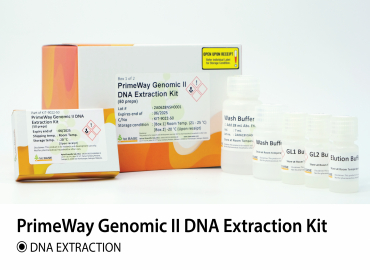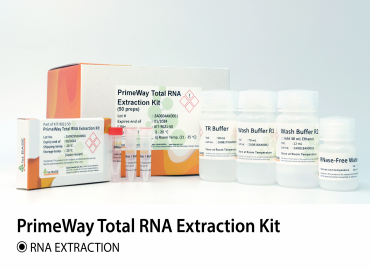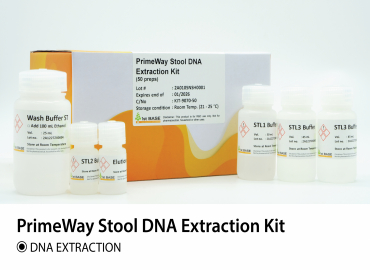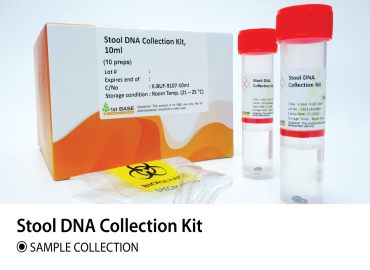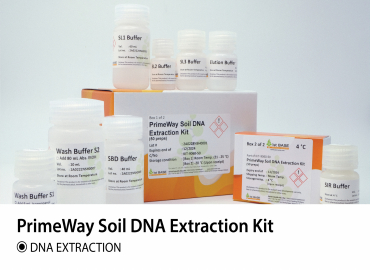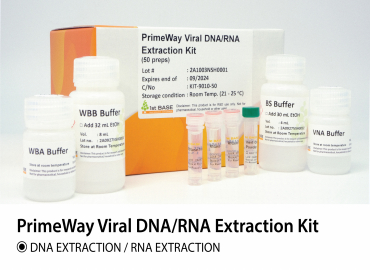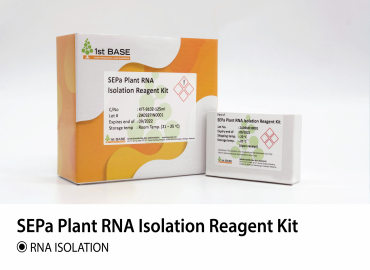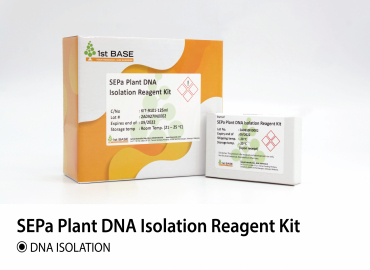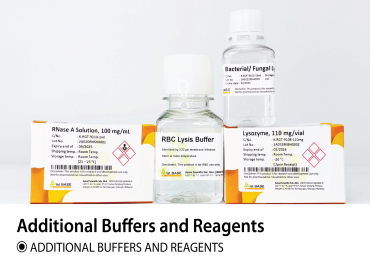The PrimeWay Plasmid II DNA Extraction Kit is an improved version of our original kit, delivering higher yield and remains high purity.
Using the proven alkaline lysis method, it efficiently extracts high-quality plasmid DNA from bacteria with ease. The purified plasmid is ready for a wide range of downstream applications, including DNA sequencing, PCR, restriction mapping, cloning, and DNA labeling.

FEATURES
- High Purity – Extracted plasmid DNA consistently achieved OD260/280nm ≥ 1.8
- Maximized Recovery – Reliable yield, even from the most challenging vectors
- Higher Capacity – Process cell culture volumes up to 7 mL with ease
- Enhanced Performance – Preheated buffer boosts recovery of large plasmids
Interested to try it out?
APPLICATION DATA
Consistency of Purity Performance

The three graphs demonstrate that PrimeWay Plasmid II DNA Extraction Kit (KIT-9041) delivers efficient extraction of high-quality plasmid DNA from diverse sample types. Consistently high purity of A260/280 and A260/230 ratios confirm minimal contamination and excellent DNA integrity, which is ideal for sensitive downstream applications including restriction digestion, cloning, and qPCR.
Recovery for Low, Medium
& High Copy Plasmid
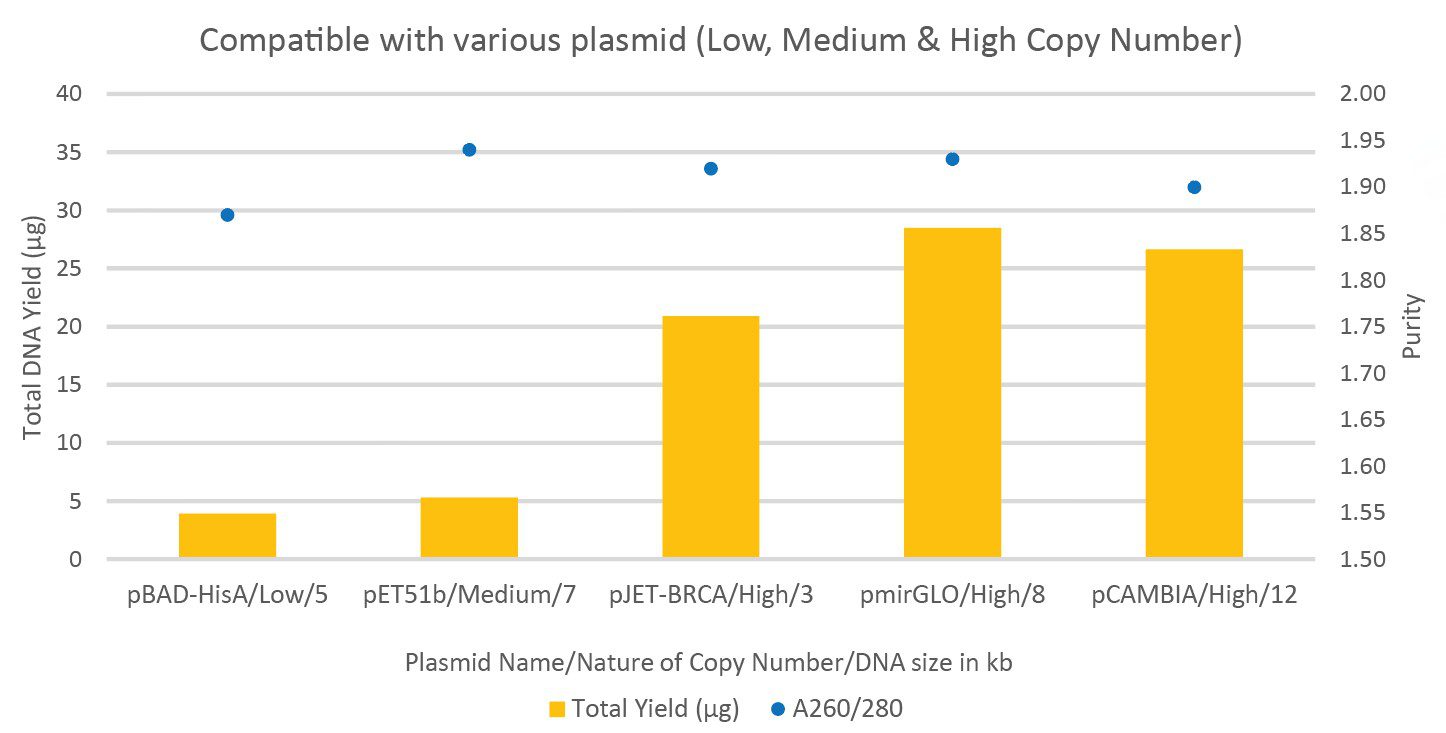
Culture with low, medium and high copy number plasmid are extracted with PrimeWay Plasmid II DNA Extraction Kit (KIT-9041). High-quality pure plasmid DNA recovery across all sizes and ready for downstream applications.
Optimal Recovery for
Various Plasmid Sizes
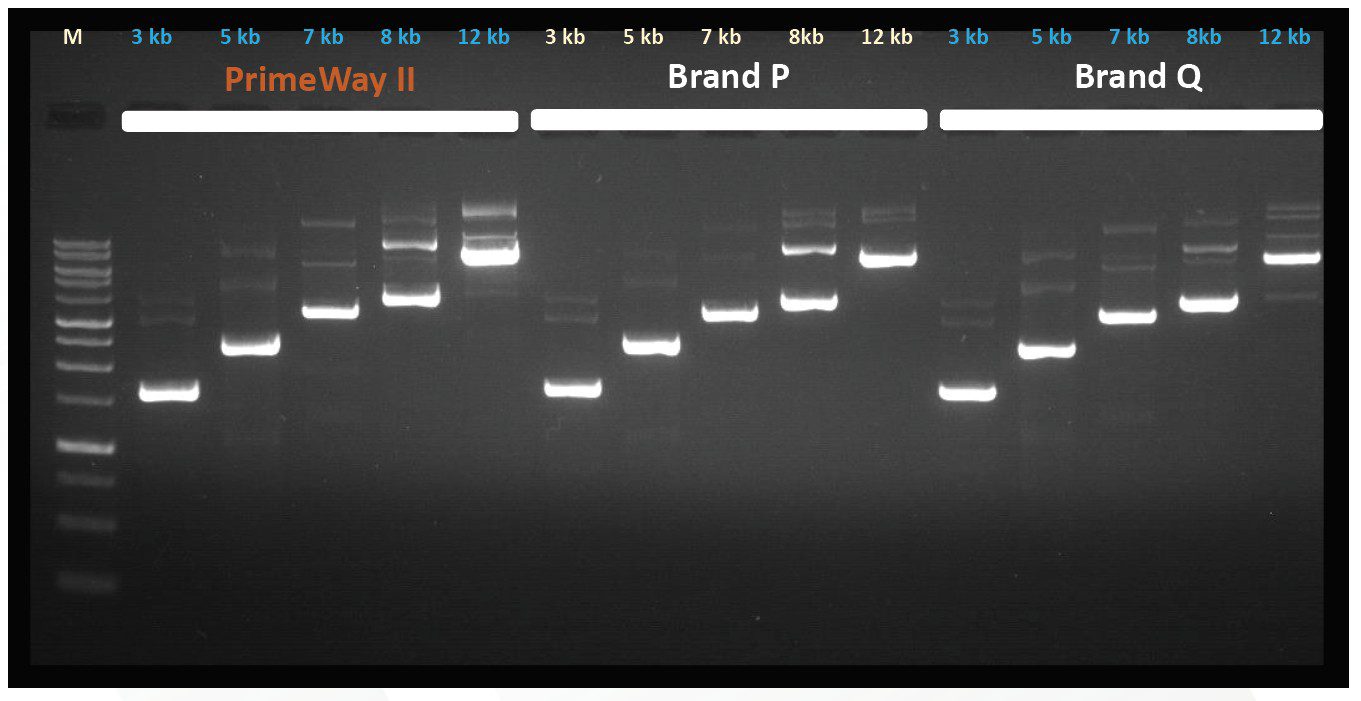
Plasmids of various sizes, ranging from 3 kb to 12 kb, purified with PrimeWay Plasmid II DNA Extraction Kit (KIT-9041), were analyzed on a 1% TAE agarose gel. Extracted plasmid DNA quality is on par with leading brands.
Enhanced Input Capacity
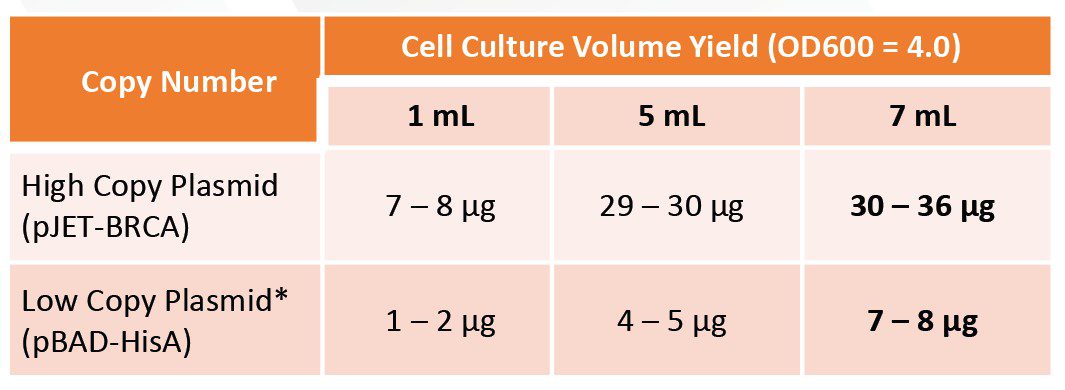
Overnight cultures of E. coli 10β containing a high copy plasmid (pJET-BRCA) and a low copy plasmid (pBAD-HisA), respectively were prepared in varying culture volumes and extracted using the PrimeWay Plasmid II DNA Extraction Kit (KIT-9041). Extracted plasmids were eluted in 100 µL of elution buffer. For both high-copy and low-copy plasmids, the PrimeWay Plasmid II DNA Extraction Kit (KIT-9041) features a high-capacity binding column that processes up to 7 mL of culture in a single prep; ensuring efficient recovery and higher yields, making it ideal for high-output plasmid preparations.
High Quality DNA
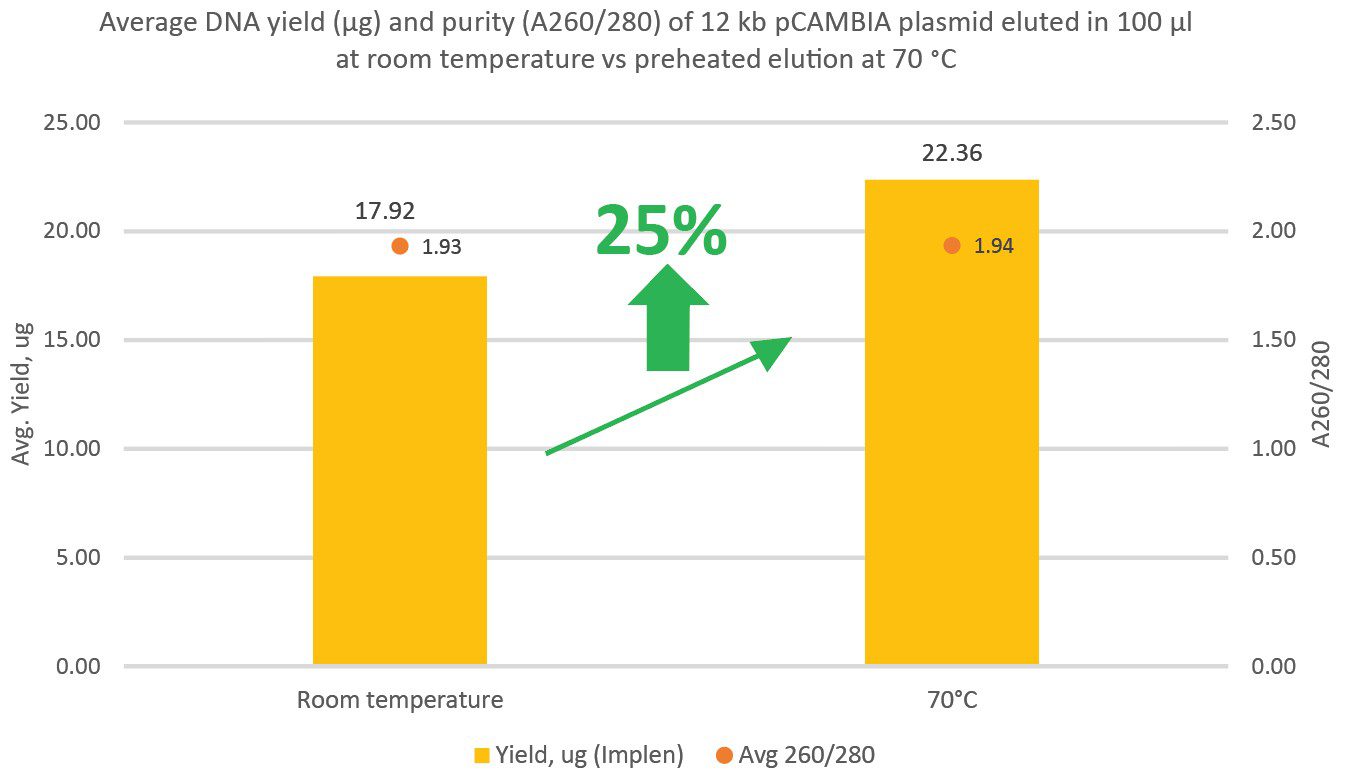
Preheating the elution buffer to 70 °C significantly increases plasmid DNA yield compared to room-temperature elution, while maintaining high purity (A260/280). This approach can enhance total DNA recovery by up to 25%.
Competitor Data – Proven Yield & Purity
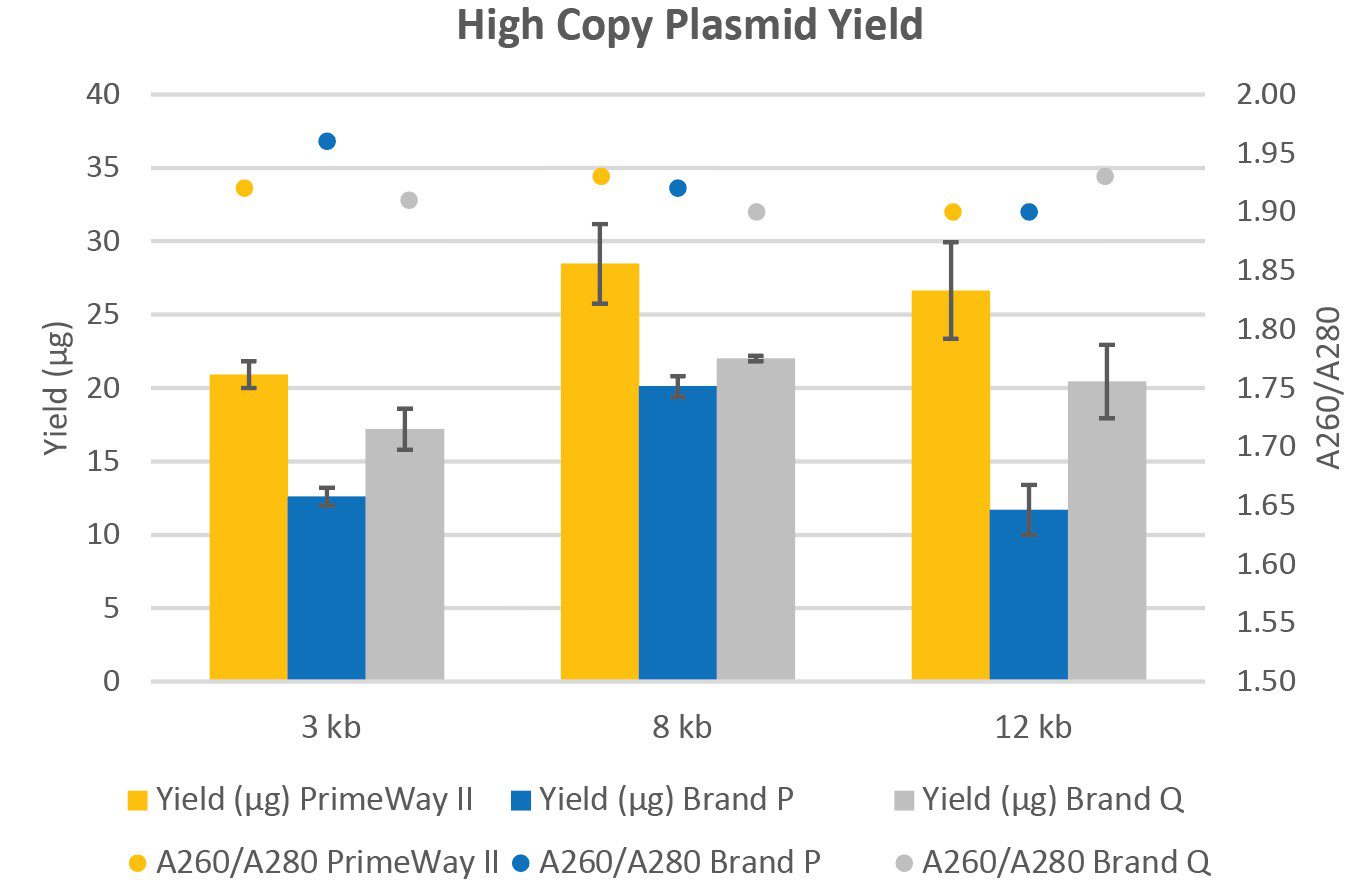
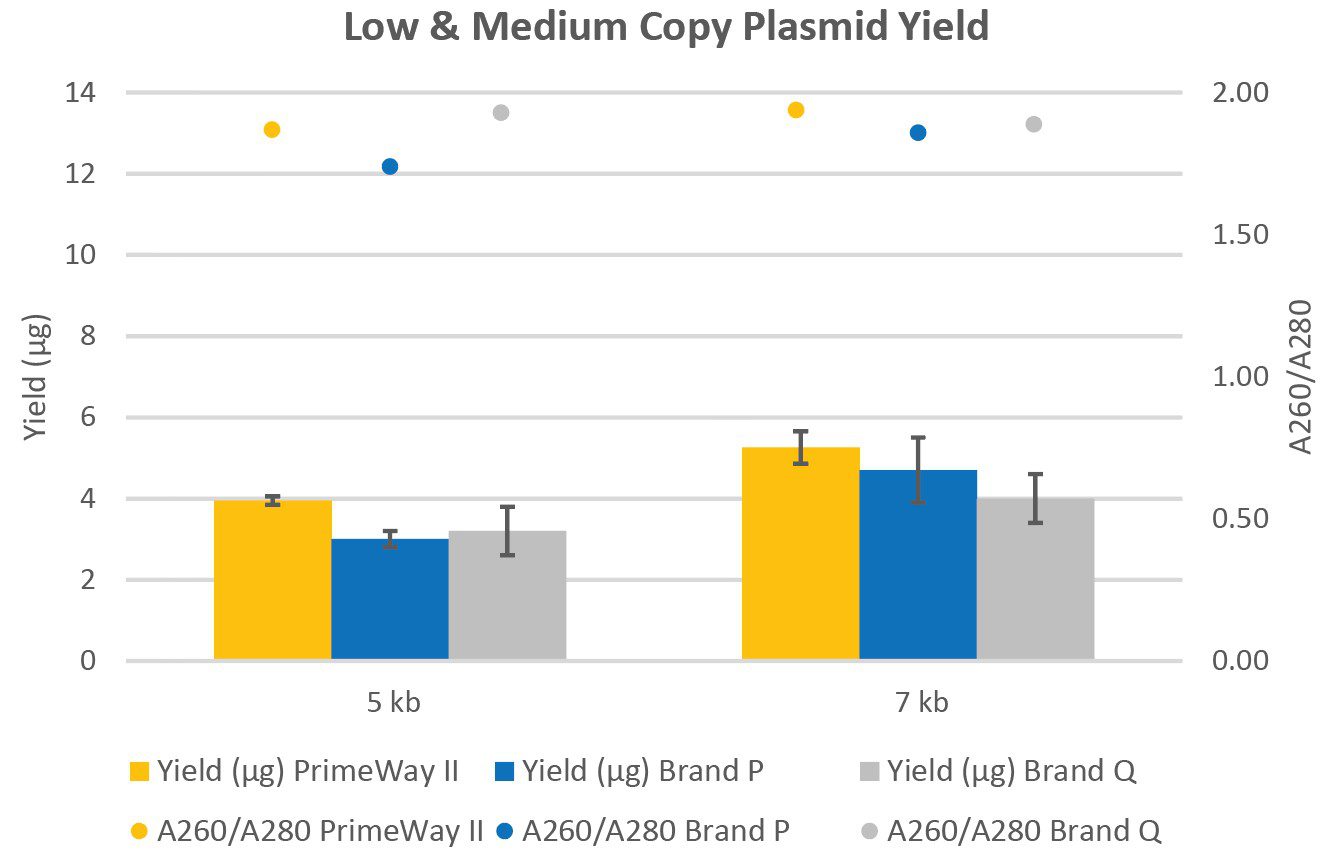
From 5 mL overnight cultures of various high-copy, medium-copy and low-copy number plasmids, multiple brands were tested side-by-side. Using each manufacturer’s protocol and 100 µL elution volume, PrimeWay Plasmid II DNA Extraction Kit (KIT-9041) consistently delivered high-purity, high-yield results across plasmid sizes.
| Product Code | KIT-9041 |
| Product | PrimeWay Plasmid II DNA Extraction Kit |
| Size | 10/50/250 prep |
| Sample Type | 1 to 7 mL Bacteria Culture |
| Yield | Up to 40 µg |
| Plasmid Size | Up to 15 kb |
| Binding Capacity | 60 µg |
| Elution | 50 to 100 µL |
| Duration | <25 min |
Contact Us for Orders or Enquiries
Select Your Country

